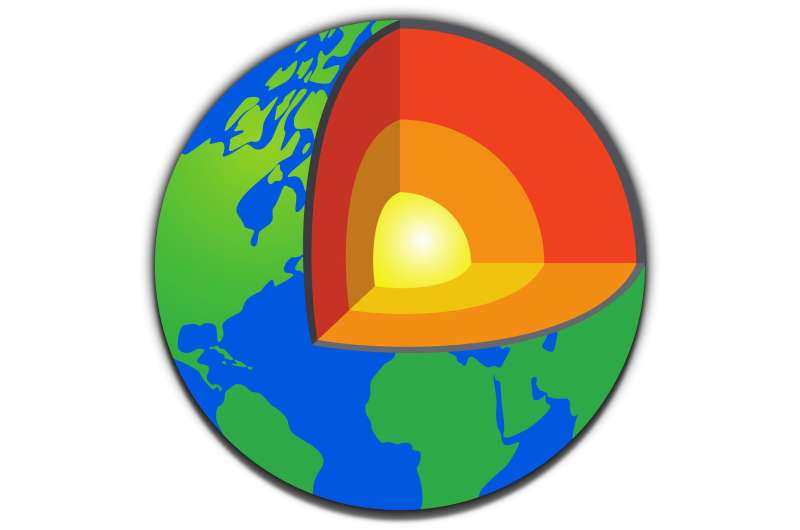Direct evidence of segregated oceanic crust trapped within the mantle transition zone

Professor Yao Huajian's research group from the School of Earth and Space Sciences of the University of Science and Technology of China (USTC), in cooperation with Dr. Piero Poli from Grenoble-Alpes University of France, combined the unique resolution reflected body waves (P410P and P660P) retrieved from ambient noise interferometry with mineral physics modeling, to shed new light on transition zone physics. Their work was published in Nature Communications.
The subduction of oceanic slabs is an important process of the Earth's internal material circulation. Studying the recycling of oceanic crust in the deep mantle can provide crucial clues for understanding mantle dynamics and circulation of deep materials. However, this is barely constrained by reliable seismic evidence.
The mantle transition zone (MTZ) is bounded by global seismic discontinuities near 410-km and 660-km discontinuities. The structure and properties of this zone have a crucial influence on the process of mantle convection. Because the basaltic oceanic crust with a lower density than the normal mantle has negative buoyancy near the 660-km discontinuity, it may be gravitationally trapped in this region. However, the narrow depth ranges of the negative buoyancy and the lower temperature and viscosity of the subducted oceanic slabs bring many uncertainties to this speculation. It's still controversial whether the subducted oceanic crust can be segregated from the oceanic lithospheric mantle and stay at that transition zone.
The traditional methods on the structure of the transition zone are mainly based on the travel time and amplitude information of natural earthquake body wave phases that were often restricted by the temporal and spatial distribution of natural earthquakes.
In this study, researchers used the continuous waveform data from more than 200 stations in North China to calculate the background noise cross-correlation function. The result obtains clear reflected seismic phases between 410-km and 660-km. There are significant P660P waveform anomalies on the front edge of the stagnant Pacific Plate, which was well explained by a simple mineral model that: the segregated basaltic oceanic crust is accumulated at the bottom transition zone at the front edge of the subduction slab.
This study revealed that the subducted oceanic plate has long been trapped at the bottom of the mantle transition zone, which may undergo mantle-crust segregation due to the increase in temperature and the decrease of the viscosity. The segregated oceanic crust may stay at the bottom of the mantle transition zone for the negative buoyancy and this can well explain the observed seismic scattering and week P660P phase. The oceanic plates that penetrate directly through the transition zone are difficult to segregate due to the rapid velocity and lower temperature (higher viscosity).
Furthermore, these subducted slabs are heated at the core-mantle boundary, where crust-mantle segregation is more likely to occur. The separated oceanic crust components will be accumulated above the core-mantle boundary or carried to the shallow part by the mantle plume.
Therefore, the evolution and cycle process of oceanic crust components are closely related to the subduction pattern of oceanic slabs. The material-filtering effect of the 660-km interface may play a crucial role in the chemical evolution of our planet.
More information: Jikun Feng et al, Segregated oceanic crust trapped at the bottom mantle transition zone revealed from ambient noise interferometry, Nature Communications (2021). DOI: 10.1038/s41467-021-22853-2
Journal information: Nature Communications
Provided by University of Science and Technology of China





















